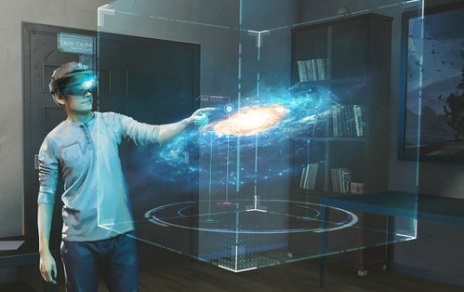Microsoft to open Windows Holographic to virtual reality vendors

Microsoft is making its Windows Holographic platform available to its hardware partners who want to build mixed-reality displays, accessories and devices.

Sounds good. But what do those words really mean?
To unpack this, we need to step back and get more precise about a bunch of terms we Microsoft watchers -- and Microsoft itself, even -- have been using (improperly) interchangeably up until now.
Microsoft's HoloLens goggles are an example of an augmented reality (AR) device that is centered around Windows Holographic.
Microsoft officials said today at Computex 2016 that the company isn't just limiting the Windows 10 variant tuned to work with HoloLens -- a k a the Windows Holographic platform -- to the HoloLens. Beginning today, Microsoft is opening up the Windows Holographic platform to any companies that want to build devices that can handle "mixed reality."
Mixed reality is not necessarily synonymous with HoloLens -- though many of us have used those words that way .Mixed reality encompasses a spectrum of experiences -- from virtual reality (VR) enhanced with holograms, to holographic computing devices enhanced with "real" life images.
Microsoft is looking to its partners to build a range of devices, including tethered, untethered, fully opaque and transparent displays. There were some rumors of ASUS building its own HoloLens. Instead, what's happening is Microsoft is enabling ASUS and other OEM partners to build mixed reality devices that make use of its Windows Holographic platform.
The full list of vendors with whom Microsoft has been talking under non-disclosure about using its Windows Holographic platform include, besides ASUS: Intel, AMD, Qualcomm, HTC, Acer, CyberPowerPC, Dell, Falcon Northwest, HP, iBuyPower, Lenovo, MSI and "many others," according to today's blog post from Computex.
By opening up its Windows Holographic platform to a variety of OEMs and ODMs (original equipment manufacturers/original design manufacturers), Microsoft is hoping to enable a gamut of mixed reality scenarios. The company produced one of its futuristic "envisioning" videos to show off the kinds of scenarios it's hoping its partners help enable:
The Windows Holographic platform includes the holographic shell and interaction model, perception application programming interfaces (APIs) and a tailored set of Xbox Live services,
Microsoft is hoping its hardware partners will adapt the Windows Holographic platform so that virtual reality devices will be able to incorporate real-world objects, and augmented reality devices will incorporate holograms. Microsoft is pitching Windows Holographic as a way to get different AR/VR/mixed reality devices to be able to communicate cross-platform as the market matures.
The fruits of this work won't materialize any time soon. Microsoft is inviting interested OEMs/ODMs to come to WinHEC the first week of November 2016 to learn more about its platforms. New and retrofitted virtual reality devices from partners running Windows Holographic are unlikely to be available to business and consumer users until calendar 2017, at the earliest.
Going forward, Microsoft is trying to position the HoloLens the same way it is positioning the Surface line of tablets and PCs. In other words, HoloLens is the "category-defining" (high-end/high priced) implementation of Microsoft's Windows Holographic platform, the same way the Surface tablet line is the high-end/high-priced implementation of the 2-in-1 category of PCs/tablets.